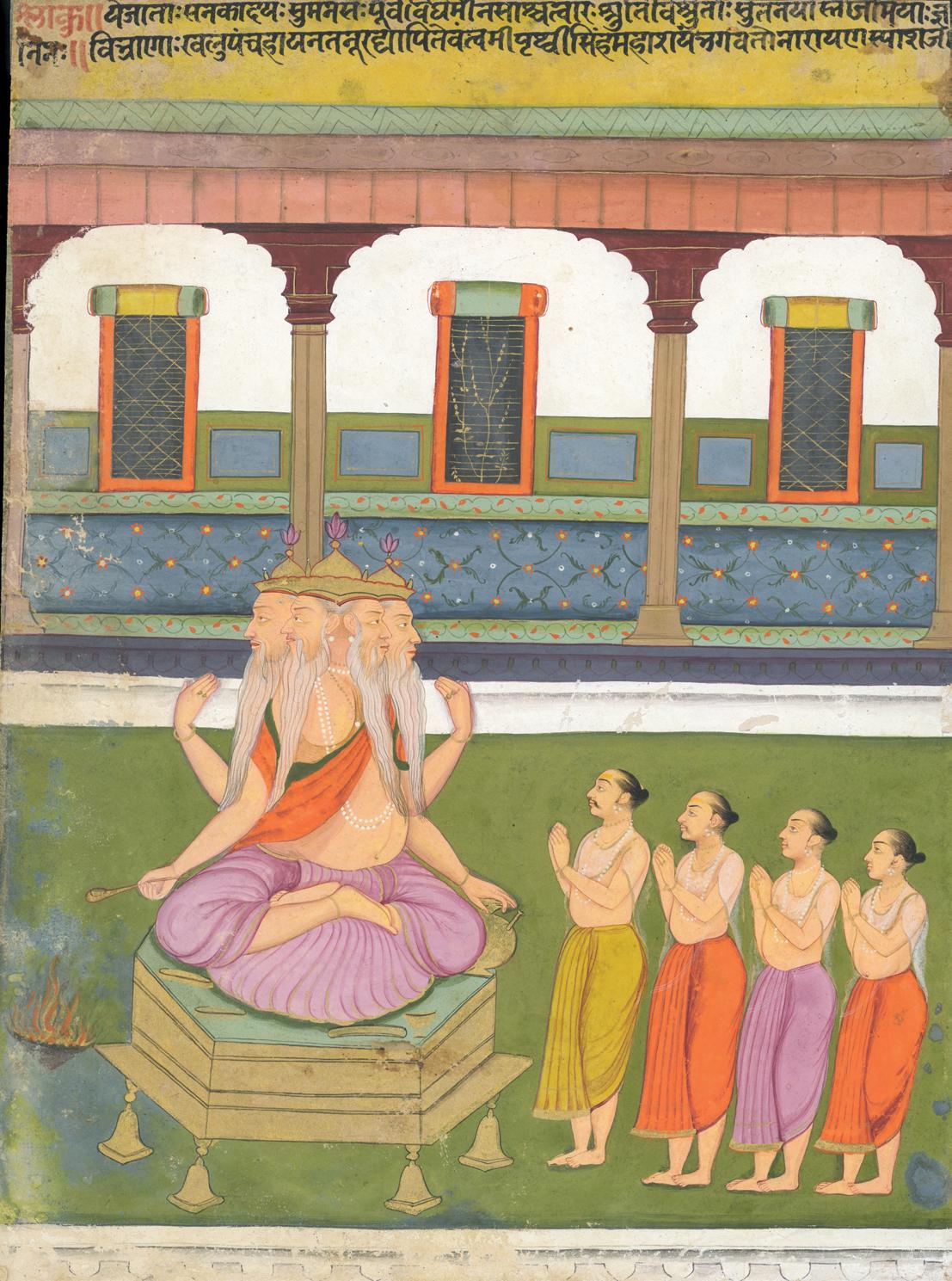
1 minute read
Brahma with Devotees
Brahma with Devotees
Bikaner, circa 1630-1640
Opaque watercolor heightened with gold on paper
10 ⅛ x 7 ⅝ in. (25.7 x 19.5 cm.)
Provenance:
From an important European collection.
A third of the Hindu triad of supreme divinity, along with Vishnu the Preserver and Shiva the Destroyer, is Brahma the Creator—progenitor of the hymns and ritual texts known as The Vedas. The Brahma Purana describes him with five heads. As the story goes, he became too arrogant, referring to himself as the greatest of the Trimurti or divine triad, so Shiva removed his fifth head to humble him. In the present composition, Brahma is shown worshipped by four devotees who may represent the four Vedas: the Rig Veda, the Sama Veda, the Yajur Veda, and the Atharva Veda.
The current painting is from the same series as The Liberation of Gajendra, illustrated by Andrew Topsfield in In the Realm of Gods and Kings, New York, 2004, p. 117, no. 43, formerly in the collection of Cynthia Polsky and sold at Bonhams New York, 16 March 2015, lot 70. The series was commissioned for a Maharaja of Bikaner; it includes a variety of Hindu deities including Vishnu’s many avatars. Each of the compositions display a strong Mughal and Deccani influence.
Recto translation:
Four great gods including Sanaka are the mind-born brilliant children of [Brahma]. Although they are eternally five years old, they are indeed renowned for their knowledge. May these divine beings protect the great king Prthvisimha, who is regarded as the partial incarnation [amsaja] of Vishnu.
Verso translation:
[The name of the meter] is Savaiya. For the benevolence [of living beings], the god Brahma created the beautiful world, both animate and inanimate. Through his mental and ascetic power, he manifested himself in the form of forty incarnations including Sanaka. This is indeed beyond description. May [the creator god] protect our learned poet king [Prathipati; Skt. Prthvipati] and make him ever young and immortal.
Translations by Gautama Vajracharya.





